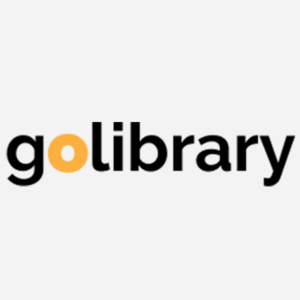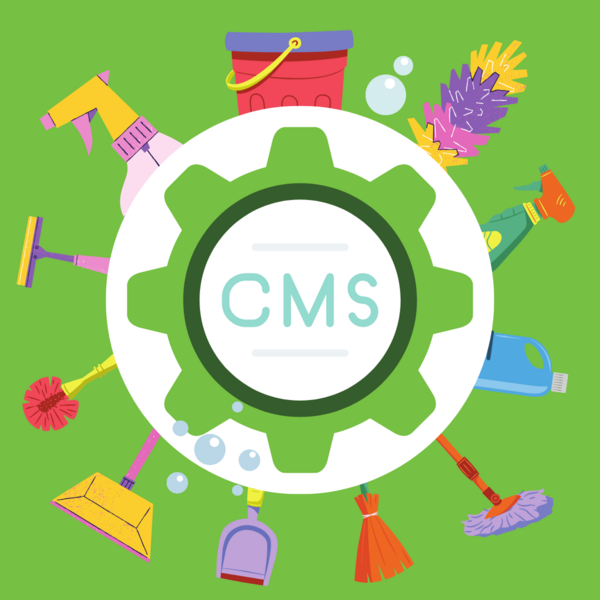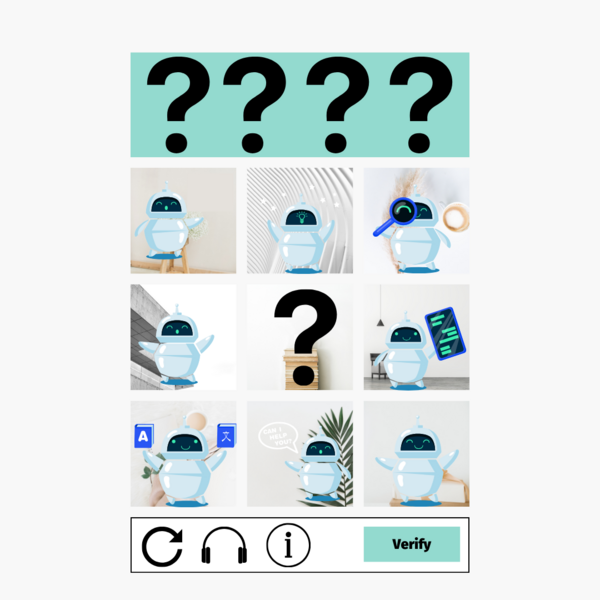Mugo Partner since 2023
Collingwood Public Library’s new website triples site visits and dramatically improves patron usability
Collingwood Public Library’s (CPL) website needed an upgrade. Not only was the interface hard to navigate, but it was outdated in terms of accessibility and features. The library knew that they had a hard deadline to meet conformance with AODA standards, and their current site was not flexible enough to make the needed changes. It was time for a fresh start, to rethink their website from the ground up to better support the needs of their community. “We were not meeting the online experience expected by the public in a post-pandemic world, and knew we needed to improve,” reported Ashley Kulchycki, CPL CEO. “We needed to make ourselves more viable. We were falling short by a long shot with our old website, and seeing what our peers were up to in other libraries, we knew we needed to catch up.”
With a project of this size, they knew it was going to have to go out to RFP. The library assembled a team to determine what they wanted out of a new site. Once all the proposals were in, Mugo Web was the successful bidder to partner with them and create a new library website. The new site was developed in the last half of 2023, and launched in December of that year. Immediately, the library saw a dramatic increase in usage of the site, doubling its previously highest recorded usage that year. The month following the launch, website usage nearly tripled compared to the highest month of usage on the old site.
From the start, CPL knew they wanted to capture the unique nature of their community and library in the design of the new site. Tianna Kwong worked with library members to identify elements that would help the new site feel familiar to users while creating a fresh experience. The library team was very intentional about their choices and inspirations. “It was like designing a home… I loved picking a font, and colours, and thinking about the feel we wanted for the site,” said Kulchycki.
The final design was a colourful and welcoming experience that echoed CPL’s brand. Special attention was paid to making sure each element was fully accessible, and part of the design process included making special templates to help library staff maintain accessibility with new content like banners. The final touch was the staff adding welcoming images to help draw users’ attention to helpful areas like FAQ links.
The new features of the CPL Library site were also designed to make the patron experience more fluid and easier to navigate. CPL staff worked together to audit their content and decide what would be migrating to the new site. They were also helpful in expanding ideas for new Mugo Library features, such as the meeting room management system.
CPL was the second library to adopt the meeting room management feature developed by Mugo. The feature allows library patrons to see the availability of different public spaces in the library and request reservation times for those resources.
A booking request is sent to administrators in the backend, who can approve, deny, or move locations of the requests. Communication regarding those steps is automated – patrons and staff get emails with confirmations of requests or any changes.
The backend of the system has different views based on the level of access for staff. Desk staff can see the calendar with the patron details to assist with access to the room or answer patron questions. Programming librarians can see the calendar and can book spaces for events beyond the set patron limits, and with a simplified process.
CPL staff helped Mugo’s development team further shape the functionality of this backend process. With their input, developers added a feature for programming librarians to book recurring events in a single step, with logical rules to help manage possible conflicts in patron bookings.
CPL also found the functionality of the feature to fit resources beyond just room bookings. Each resource can have separate landing pages, with customized calendars, forms, and content. CPL staff used this to add services and features related to room use (such as exam bookings) on the same landing page.
Another feature getting a lot of use by CPL is the custom forms built into Mugo Library. These have allowed CPL staff to streamline several processes and better engage with patrons. Whether it’s suggesting a title for purchase, joining their Books on Wheels program, or adopting a book club kit, patrons can easily submit feedback and requests without having to leave the site. The form goes directly to the email of the selected librarian for follow-up. “We’re using a lot of the custom forms,” Kulchycki shared. “We had used Google forms previously, but this is more private for patrons, more secure. We can target which staff member receives these forms instead of going through a general email that may get forwarded multiple times.”
Integrating with CPL’s SirsiDynix Integrated Library System (ILS) required a good deal of collaboration between library staff and Mugo developers. CPL shares access to their ILS with other partner libraries, which means several levels of communication and permissions had to be navigated. Several options for how the integration could be implemented were explored, and the result is a system where library staff can build booklists directly in the CMS by adding the ISBN. The CMS pulls the image and links to the resource from the ILS. Staff can create booklists to be added to pages on the site. They’ve used this to highlight different parts of the collection.
“I love that the booklists are browsable and have a call-to-action,” said Jennifer Perks, Supervisor of Community Services. “[A staff member] was looking at our Black Voices booklist. All the items had circulated. The feature of being able to put an item on hold from the list has been helpful and helped our collection move.”
Mugo Library’s customizable widgets on the homepage have also helped CPL staff showcase their services in a more discoverable way to patrons. Site administrators can easily change banners, or even move elements around the page with simple drag-and-drop tools. “The booklists and hero banner are my favorite parts,” said Perks.
These features were design elements the team ended up investing time in, to determine the best options for usability and accessibility. Instead of using a traditional slider or carousel, it was decided to focus on a main feature image with callouts below. Both types of assets can be easily changed and ensure that important information isn’t buried in slides that may or may not be seen by users.
“I didn’t think I would like not having scrolling images,” Perks continued, “but it’s refined the user experience, and it’s made me more intentional about what I’m promoting on the home page. It has a better effect on our users and patrons.”
Part of the early design of the new site was a homepage element that featured a selected event in addition to the automatically selected upcoming events. “It’s a new avenue to reach patrons,” Leigh Ann Epp, Public Relations Coordinator said. “I like the fact that it pulls the most recent event with an image, and you don’t have to think about that. The programmers have all the information in one spot, one stop access. As far as marketing, the calendar alone has been very helpful.”
Gordon Palmer, Technology Coordinator agrees. “Being able to display the events on the home page helps get our stats up and bring people in for programming.”
Palmer goes on to discuss the event calendar features, where patron usability was a key factor in design and implementation. “Being able to filter makes it easier to find what we’re looking for.”
The added features do come with some growing pains for the library, but the results are worth it. “We’ve been rethinking how programmers schedule events. It adds a level of complexity, but it’s a new system we are navigating, different from what we used to have, but we’re still learning,” Palmer said.
Kulchycki adds, “We’re still learning about all our new features and have to remember we have these tools to use, like variable hours, and banners.”
With strong staff adoption and reactions to the new site, it remained to see if the new design, features, and focus on usability would make a difference to patrons. Initial reports are already showing a significant difference in how the library’s site is accessed. “Analytics show the story of how the community is using [the new site],” says Kulchycki.
Prior to the launch of the new site, the highest usage the Collingwood Public Library saw in 2023 was approximately 14,000 users in one month. In December 2023, when the new site launched, 30,000 users visited the site. While a new website is expected to garner fresh visits and attention, the more encouraging numbers followed in January, a typically quiet month following the holiday season. However, site usage increased exponentially this January with an impressive 41,000 visits. “To get that number in what is often a quiet month is hopefully indicative of a trend we want to keep seeing,” Kulchycki said.

Recently, one of our clients came to us looking to archive an older website that was no longer being updated. The site still needed to be accessible to the public for reference purposes. Taking it offline was not an option due to its historical value.
Running the site on a traditional hosting environment meant paying for a full web server, application runtime, monitoring, and associated maintenance — all of which were unnecessary for a site that no longer required server-side processing.
If you have a legacy site that doesn’t require dynamic content, migrating it to AWS S3 and CloudFront can be a highly cost-effective solution, all while ensuring it remains accessible, secure, and efficient.
Automating website management tasks like SSL certificate renewal is a great way to save time and mitigate human error, particularly if you manage multiple websites. Learn how to automate SSL certificate renewal using Let’s Encrypt and Oracle Cloud Infrastructure DNS API.
Building a website often comes down to choosing between “best–of-breed” services and cost-effective solutions that meet your business needs while being relatively easy to manage. Here we explore AWS services for automated text messaging and email, and compare them with other 3rd party options in the context of work done for GoLibrary.
Newly revised rules from the ADA regarding digital accessibility mean libraries in the United States have until April 26th, 2026, to ensure they are conforming to WCAG 2.1 AA standards. What does this entail, and how can a library system start making content more accessible?

Tabbing through a web page can be a frustrating experience. The user tabs to access a menu, but with the keyboard's next tap, they’ve moved on to another page element and have to retrace their steps to access the desired content.
For users who rely on keyboard navigation, this can be a major accessibility roadblock. And for other site visitors, it’s just poor UX.
Fortunately, you can implement a fairly straightforward function in JavaScript called a “focus trap” to ensure users don’t leave the page area they’re in without intending to do so.

Mugo partner since 2024
An initiative led by the Northern Lights Library System to promote library services to Indigenous communities

WordPress can be a great option for easy website development, but because of the rapid evolution of the CMS, it can lead to inefficient code and slow loading pages. We'll show you how to clean up unused CSS and JS from pages to improve site-wide performance.

CAPTCHA is an essential need on online forms, but to be blunt, the UX sucks. Without the implementation tips (helpfully detailed below), Google’s otherwise reliable reCAPTCHA service implemented “as-is” doesn’t actually provide any browser validation. The user will have to wait for it to make a time-consuming round trip to the server. It’s a problem for anyone and becomes compounded for users with accessibility needs.